Motorola DROID MAXX Review
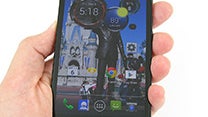
Introduction
For those keeping track, we recently reviewed the Motorola DROID Ultra and the DROID Mini, which now leaves us with its big brother, the DROID MAXX. There are a few key differences between the Motorola DROID MAXX and the DROID Ultra – first the MAXX has a higher capacity 3500mAh battery to provide longer usage time, as well as 32GB of internal memory instead of only 16GB, and soft-touch coating on the back of the device. Because of these extra features, the Motorola DROID MAXX has a premium price of $300 with a 2-year Verizon contract, making it $100 more than the DROID Ultra. Are these extra features worth the price of the DROID MAXX? Let’s take a closer look.
Included in the retail package is the Motorola DROID MAXX XT1080 smartphone, 2-port USB wall charger, microUSB cable, and user guides.
Design
When looking at the Motorola DROID MAXX next to the DROID Ultra from the font, it may be difficult to even notice a difference. But after picking them up, you can clearly tell which one is the DROID MAXX, as it is slightly thicker and heavier than the DROID Ultra. Also, Motorola decided to use a soft-touch coating on the back that has a nice woven pattern to it. This gives the DROID MAXX a more higher-end look and feel that we appreciate over the glossy fingerprint magnet on the back of the DROID Ultra, even though both are made out of Kevlar.
Invalid image meta
Display
Both the DROID MAXX and DROID Ultra make use of the same 5” Super AMOLED display with 720x1280 resolution. It produces nice saturated colors and is pleasing to the eye, but when compared next to the Samsung Galaxy S4, you can clearly see a difference, as text and images are sharper on the Galaxy S4’s 1080p display. Since these phones use Super AMOLED technology, the viewing angles and color reproduction are great, but we did notice that the display on the Galaxy S4 appeared slightly brighter when both display’s brightness were turned all the way up.
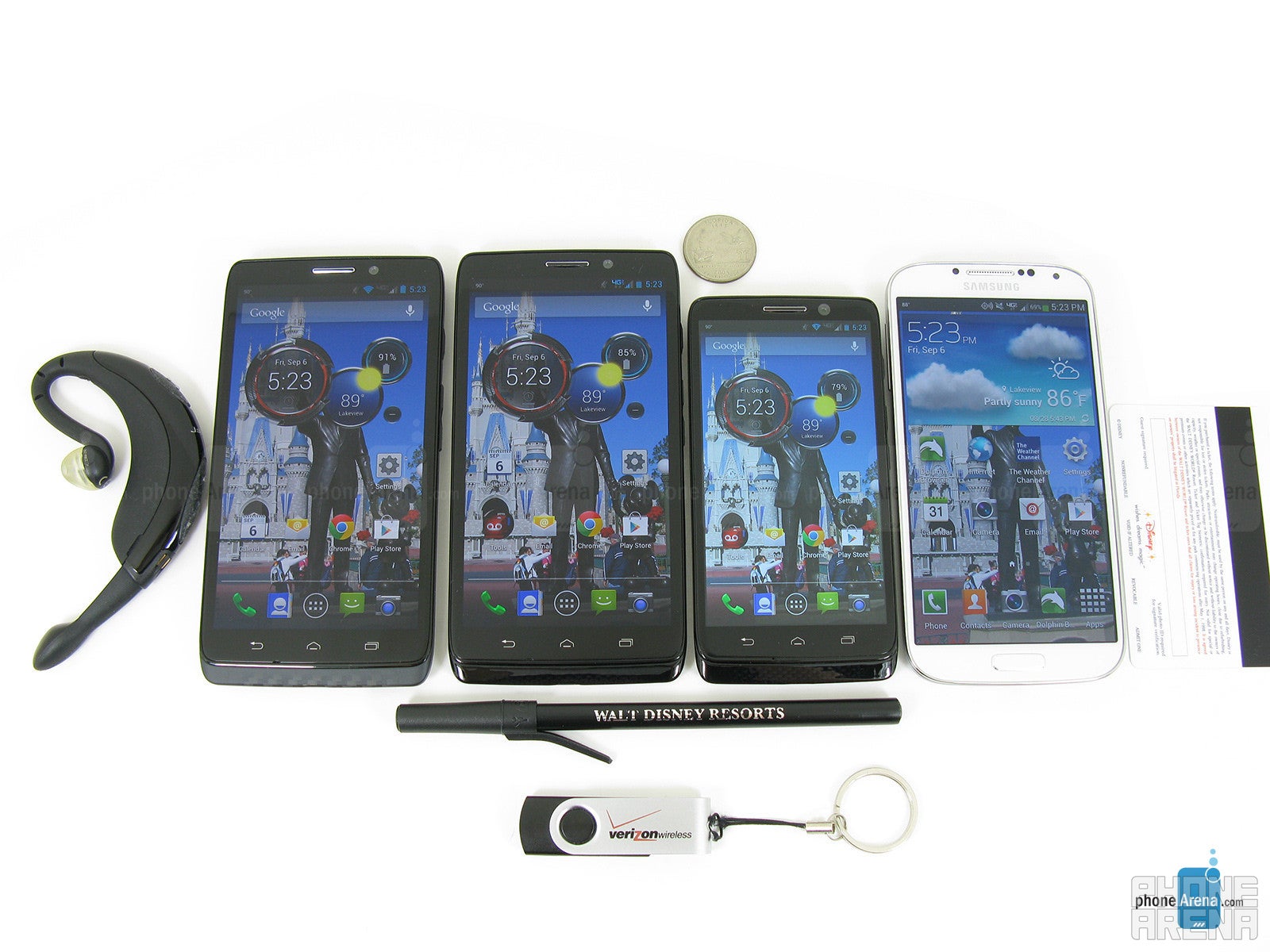
Left to right - Motorola DROID MAXX, Motorola DROID Ultra, Motorola DROID mini, Samsung Galaxy S4
Also on board is the Active Display notification feature, which Motorola has included on all of their new DROID and Moto X. Basically what it does it allows you to nudge the phone, and only the center of the display will turn on showing the date and time. Then if you get any notifications, such as a new message or a missed call, only that part of the display will turn on. This way, the device will conserve power since it does not have to turn on the entire display.
Motorola DROID MAXX 360-Degrees View
Interface and Functionality
The Motorola DROID MAXX, Ultra and Mini, as well as the Moto X, are running pretty close to stock Android 4.2.2 Jelly Bean, including the lock screen, 5 desktop home screens, app drawer, and widget selection. This means that there are no themes, such as what you get with HTC Sense, but you can always install a 3rd-party launcher or theme app if you desire.
Also cloned from the Moto X are some features that are exclusive to Motorola.
Touchless Control:
This is combined with Google Now and is actively awaiting your command. You start off by training it to recognize your voice. After that, all you have to say is “OK, Google Now” and then a command. So saying, “OK, Google Now. What’s the current weather?” the phone will launch Google Now and will show what your current weather is. You can also ask it to place phone calls, check appointments, look up contacts, and get turn-by-turn directions. Even though it is fun to use, you still have to interact some with your hand once Google Now is active. One thing that isn’t clear is how much battery is used for it to always keep the mic listening to hear your voice to launch Google Now. So if you want to save some battery life, you might just want to keep this feature turned off.
Motorola Assist:
Who wants to be distracted while driving, in a meeting, or while sleeping at night? With the Motorola Assist app activated, it knows when you are driving, thanks to GPS updates, and will automatically read incoming text messages, and can auto-reply to them as well. While the Resume Music feature will connect to your car’s Bluetooth for playing music. For meetings that are in your calendar, Motorola Assist will automatically place the phone on silent mode and auto-reply to messages. Lastly, when you specify what time you sleep at night, the phone will also enter into a silent mode.
Droid Zap:
The Motorola Droid Zap is pretty much their version of Samsung’s S Beam. You can use it to share photos and videos with several near-by people at once by swiping up on the screen with two fingers, and the people that want to receive it then swipe down with two fingers. Only the newest Motorola phones can send picture with Droid Zap, but any Android phone can install the Droid Zap app to download and view the images or videos you send.
Motorola Migrate:
This is designed to help you transfer your data (photos, videos, volume and screen settings, call and text history, and contacts) from your old phone to the new DROID Ultra. First you download the Motorola Migrate app from the Play Store on your old phone. Both devices are connected to your PC, so the transfer is from device-to-device and does not use any data air-time.
Wireless Display:
As long as you have a compatible Miracast Wireless enabled display, you can use the phone’s Wireless Display feature to stream what you’re doing on the phone to the big screen. Naturally, the hardest part about this feature is actually having a compatible display to use, but if you do, it should be useful in viewing photos, watching videos, playing games, or surfing the web.
Organizer and Tools
There is really nothing out of the ordinary here. We have the stock Android Calendar, which you will remember is integrated with the Touchless Control and Motorola Assist apps. There’s also the basic calculator, clock, alarm, and stopwatch and countdown timer.
Messaging
Combined with a 5” display, the stock Android on-screen keyboard works remarkably well, as it is responsive and has good word prediction. Even in portrait mode, you can easily enter words just with just the use of one thumb, though landscape does require both hands.
Processor and Memory
All of the new Motorola DROIDs and the Moto X are using the company’s own designed processor, the Motorola X8 (you can read more details about it here).
The key to the X8 is that it is technically an 8-core SoC, which has a 1.7 GHz dual-core application processor, a 400MHz quad-core GPU, a natural language processor core, and a contextual computing core. The latter of which is used for voice recognition of Touchless Controls and the behind-the-scenes working of Motorola Assist.
In daily use, the DROID MAXX with its X8 processor and 2GB of RAM is plenty quick in its boot-up time, and also loading and running apps, multitasking, and playing games. As you can see from the benchmarks below, it is no slouch, and even holds up well to other quad-core devices.
| Quadrant Standard | AnTuTu | GFXBench | Vellamo (HTML5 / Metal) | |
| Motorola DROID MAXX | 8754 | 21351 | 5968 / 53 | 2454 / 768 |
| Samsung Galaxy S4 | 12078 | 24701 | 4437 / 39 fps | 1702 / 704 |
| HTC One | 12481 | 23308 | 3551 / 31 fps | 2395 / 781 |
| Google Nexus 4 | 4757 | 16749 | 4917 | 1375 / 600 |
As we mentioned earlier, the DROID MAXX comes with 32GB of internal memory, instead of only 16GB that is included with the DROID Ultra. This is then divided into the Android OS, Apps, etc, which leaves you with about 21GB of usable space out of the box. While we appreciate that the DROID MAXX has twice the storage of the DROID Ultra, it would have been nice if the devices included a microSD memory card slot for user-expandable storage.
Internet and Connectivity
Combining both the X8 processor and Verizon’s 4G LTE data network, the Chrome browser on the Droid MAXX is a breeze to use. Pages load fast and properly rendered, with pinch-to-zoom and scrolling being quite fluid.
When using the SppedTest.net app, we were able to get between 15-27 Mbps downloads and 10-15 Mbps uploads depending on the area, time of day, and signal strength. Since the device is Global Roaming ready, it can also be used in other countries with EDGE/GSM (850/900/1800/1900MHz), HSPA/UMTS (850/900/1900/2100MHz), supporting HSDPA 42.2 Mbps (Category 20) and HSUPA 5.76 Mbps speeds.
Other connectivity includes Wi-Fi 802.11 a/b/g/n (2.4GHz and 5GHz), Bluetooth 4.0 with EDR, and NFC.
Camera
Another feature shared between the new DROIDs and the Moto X is the 10MP Clear Pixel camera. Instead of using a standard RGB sensor, the Clear Pixel sensor uses RGBC, with the C standing for “clear”, which is said to help collect up to 75% more light. This is combined with an f/2.4 aperture lens and 1.4 micron pixel size.
The camera interface is easy to use, minimalistic in its nature with some basic settings and lacking any fancy color effects/modes. Swiping over to the right will pull over a dial on the left that allows some user options for HDR, flash, tap to focus, slow motion video, panorama, geo-tag, shutter tone, and quick capture – which allows you to quickly launch the camera just by flipping it in your hand twice – though we did notice that it sometimes didn’t work all that well. There is also continuous burst shooting, all you have to do is press-and-hold on the screen for it to take one picture after another. One thing missing is a way to change the camera resolution, as it is fixed at 10MP 4320x2432 pixel resolution widescreen.
For indoor images with bright light, images continued to look passable, but the ISO was at 640, which did cause for a bit of visible grain. As we moved to lower light, the ISO jumped all the way to 2500, which made the image plenty bright, but colors and details were noticeably blotchy looking. The single LED flash does a good job illuminating the room, but again we have an ISO of 2000 with a lot of grain, and colors have a bit of a green-hue to them.
Videos are recorded at 1080p resolution at 30fps and with a data rate of 17 Mbps, allowing for smooth playback without any jittering effect. Even though videos look good for the most part, we did notice that when going between bright and dark areas, it does take a few seconds for the exposure to readjust, and the focusing can take a couple seconds as well. Sound quality is pretty good, as it’s captured in 2ch stereo with a bit rate of 128 kbps and a 48 kHz sampling rate.

Multimedia
With the Motorola DROID MAXX being almost stock Android as possible, the gallery app is straight forward and easy to use without any unnecessary clutter. All pictures and videos are shown in a thumbnail view, based on their file directory. But there are still some built-in picture adjustments available, such as color effect, borders, and cropping.
When it comes to video playback, again there are no surprises here, as it can play pretty much any file you can though at it, including MPEG4, H.264/263, DivX and Xvid; all of which look nice on the 5” AMOLED display.
Call Quality
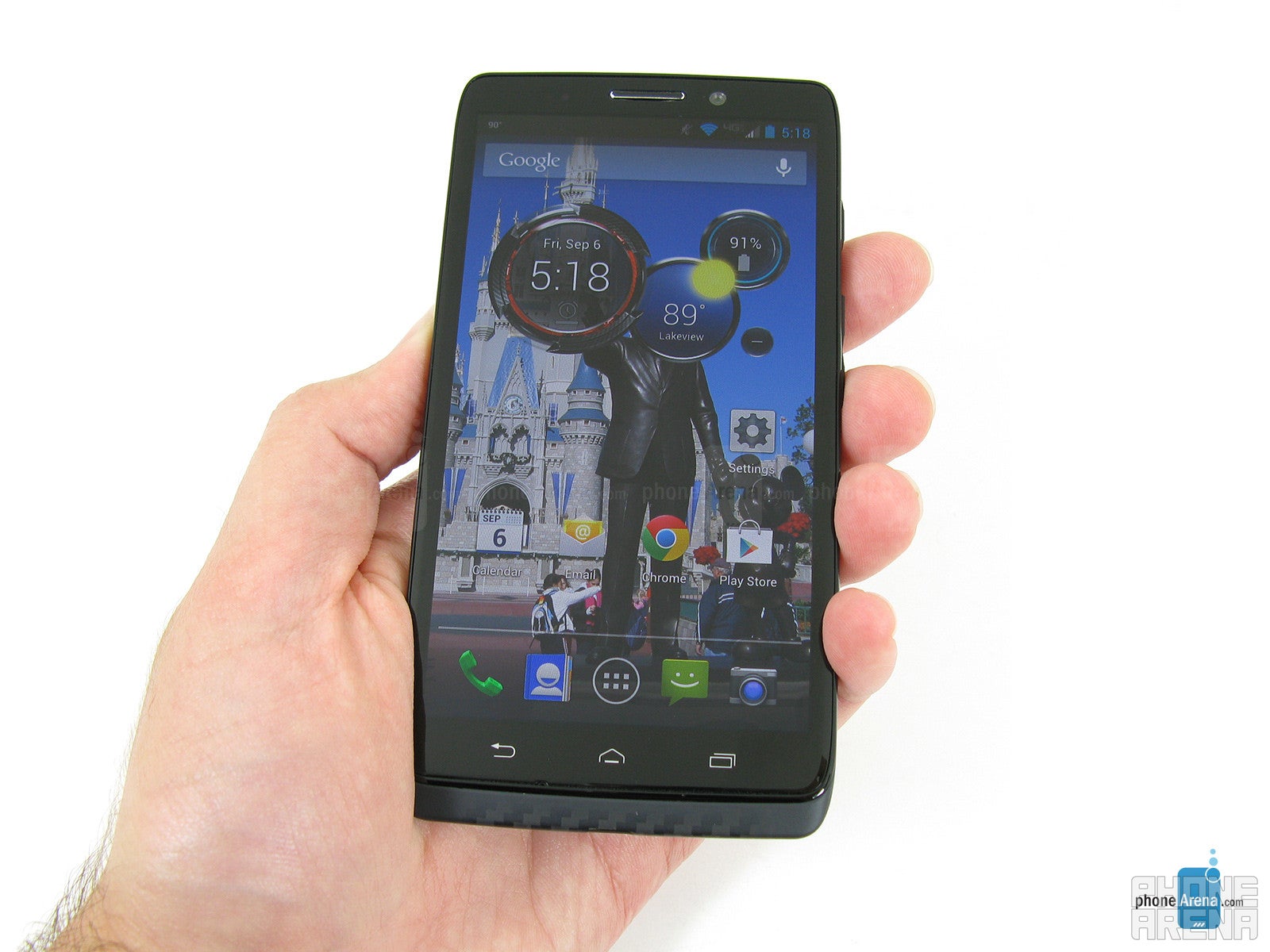
Battery
If you are looking for a smartphone with a king-size battery, this should get your attention, as the Motorola DROID MAXX comes with an impressive 3500mAh internal battery. Keep in mind that the DROID Ultra has a 2130mAh battery, and even last-year’s model (the DROID RAZR MAXX HD) was 3300mAh. During our testing, we were able to get up to 20 hours of continuous talk time, or about 3 days of mixed usage on a full-charge with the DROID MAXX, compared to 13 hours of talk time or 2 days of mixed usage on the DROID Ultra.
Conclusion
Coming in at $300 with a 2-year Verizon contract, the Motorola DROID MAXX is the most expensive of the three DROID models. It combines all the features of the DROID Ultra, but increases the battery to 3500mAh, doubles the internal memory to 32GB, and looks higher end with the soft-touch woven backing. Still, $300 with contract is a lot for a smartphone, and we’re not really sure that the Motorola DROID MAXX can command that premium price, especially with the Samsung Galaxy Note 3 and LG G2 coming out soon.
Software version on the reviewed unit:
Android 4.2.2 Jelly Bean
Baseband version: MSM8960PRO_BP_2323.011.75.00R
Kernel version: 3.4.42-gfd1a699-00151gc170e6f
Build date: Tue Aug 6 18:39:38 CDT 2013
Build number: 12.9.0Q2.X-160-OBK_TA-14-7

Follow us on Google News


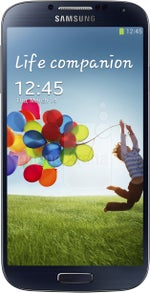
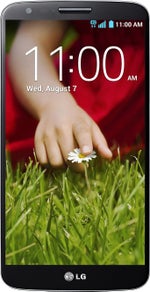






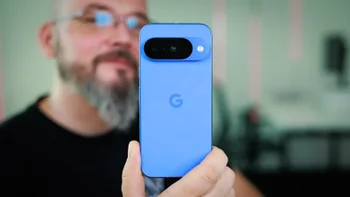
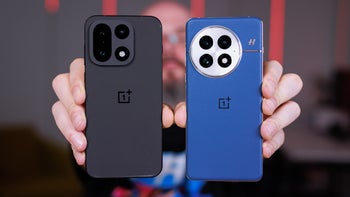


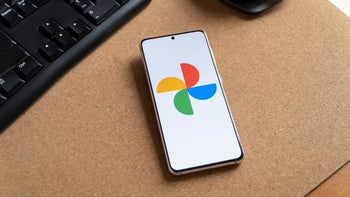
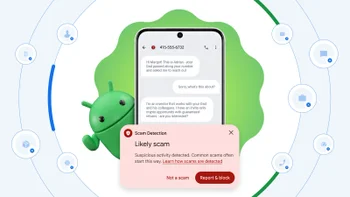
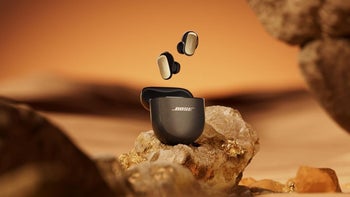
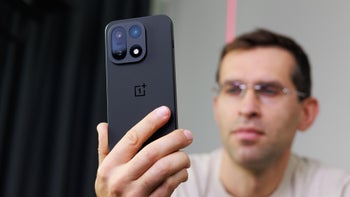
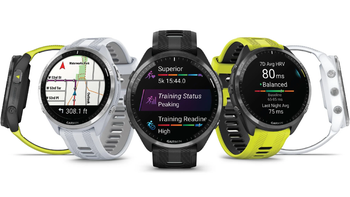
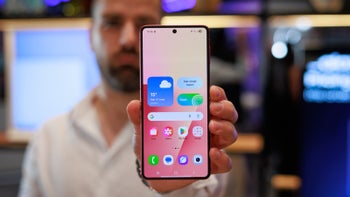

Things that are NOT allowed:
To help keep our community safe and free from spam, we apply temporary limits to newly created accounts: